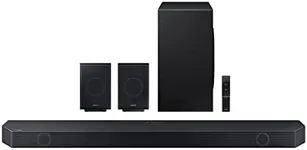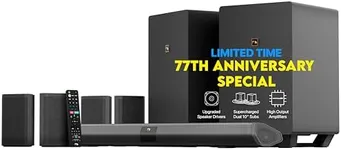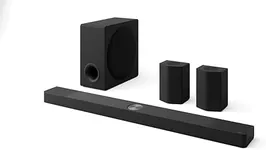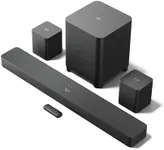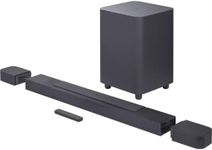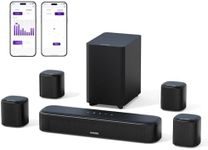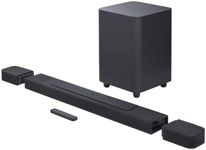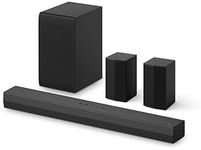Buying Guide for the Best Wireless Surround Sound System
Choosing the right wireless surround sound system can significantly enhance your home entertainment experience. It's important to understand the key specifications and features that will best suit your needs. By focusing on these aspects, you can ensure that you get a system that delivers high-quality sound, fits well within your space, and is easy to use.Sound QualitySound quality is crucial for a surround sound system as it determines how immersive and clear the audio experience will be. Look for systems with high fidelity and low distortion. Systems are often rated in terms of frequency response, which indicates the range of sounds they can reproduce. A wider frequency range (e.g., 20Hz to 20kHz) generally means better sound quality. Consider your listening habits; if you enjoy music and movies with rich, detailed sound, prioritize higher sound quality.
Number of ChannelsThe number of channels in a surround sound system refers to the number of speakers included. Common configurations are 5.1, 7.1, and even 9.1, where the first number indicates the main speakers and the '.1' represents the subwoofer. More channels can provide a more immersive experience, but they also require more space and setup. If you have a smaller room or prefer simplicity, a 5.1 system might be sufficient. For larger spaces or a more enveloping sound, consider 7.1 or higher.
ConnectivityConnectivity options determine how easily you can integrate the surround sound system with your other devices. Wireless systems often use Bluetooth, Wi-Fi, or proprietary wireless technologies. Ensure the system supports the devices you plan to connect, such as TVs, smartphones, or gaming consoles. If you value convenience and flexibility, look for systems with multiple connectivity options and easy pairing processes.
Ease of SetupEase of setup is important, especially for wireless systems. Some systems come with automatic calibration features that adjust the sound based on your room's acoustics. Others might require manual setup, which can be more time-consuming. If you're not tech-savvy or prefer a hassle-free experience, opt for systems known for their user-friendly setup processes. Consider the placement of speakers and whether the system includes mounting hardware or stands.
CompatibilityCompatibility ensures that your surround sound system works seamlessly with your existing devices. Check if the system supports the audio formats used by your media sources, such as Dolby Digital, DTS, or newer formats like Dolby Atmos. Compatibility with smart home systems and voice assistants can also enhance usability. If you have a diverse range of devices, prioritize systems with broad compatibility to avoid connectivity issues.
Design and SizeDesign and size are important for ensuring the system fits well within your space and complements your decor. Wireless systems can vary from compact, discreet speakers to larger, more prominent units. Consider the size of your room and where you plan to place the speakers. If aesthetics are important to you, look for systems with sleek designs that match your style. Smaller rooms may benefit from compact systems, while larger spaces might require more substantial setups.
Battery LifeBattery life is relevant for wireless systems that rely on rechargeable batteries. Longer battery life means less frequent charging and more uninterrupted listening. Systems with removable batteries can offer more flexibility, allowing you to swap out batteries as needed. If you plan to use the system for extended periods or in areas without easy access to power outlets, prioritize models with longer battery life.


